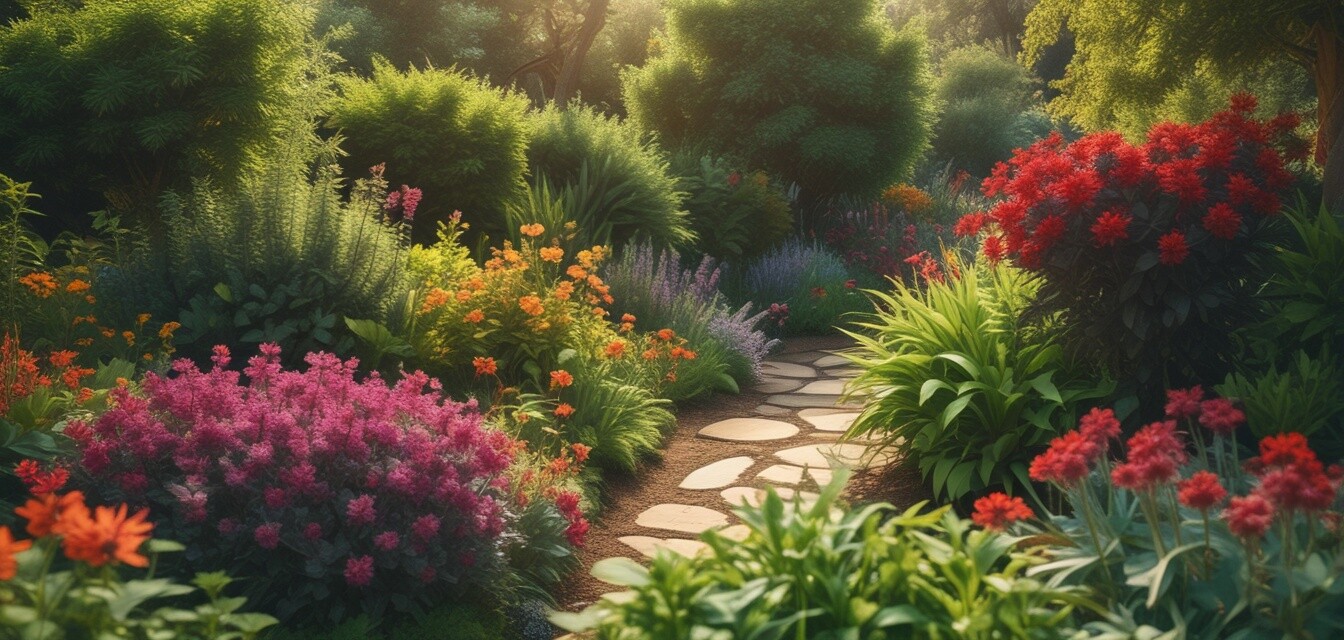
Growing Interest in Native Plant Landscaping
Key Takeaways
- Native plants support local wildlife and promote biodiversity.
- Landscaping with native species can reduce water usage and maintenance costs.
- Native plants are more resilient to local pests and diseases.
- Adopting native landscaping practices contributes to conservation efforts.
- Increasing awareness and resources are driving the popularity of native plants.
In recent years, there has been a burgeoning interest in native plant landscaping. As homeowners, landscapers, and ecologists alike recognize the substantial benefits of incorporating native species into their gardens, this trend aims to improve local ecosystems while enhancing outdoor aesthetic appeal. This article will delve into the importance of native plant landscapes and their contributions to biodiversity and conservation.
What are native plants?
Native plants are species that naturally occur in a specific region, having adapted to the local climate, soil, and other environmental factors. They have evolved alongside local wildlife, establishing symbiotic relationships that are crucial for maintaining balanced ecosystems. Unlike non-native species, native plants thrive with minimal maintenance and contribute significantly to the local flora and fauna.
Benefits of native plant landscaping
| Benefit | Description |
|---|---|
| Support biodiversity | Native plants provide habitats and food for local wildlife, including insects, birds, and other organisms. |
| Low maintenance | These plants are well adapted to local conditions and require less water and fewer fertilizers, reducing upkeep. |
| Conserve water | Native plants possess deep root systems that help retain moisture and reduce the need for irrigation. |
| Resilience to pests | Native species can better resist local pests and diseases, minimizing dependency on chemical treatments. |
| Promote soil health | Native root systems can enhance soil structure, promoting better water infiltration and nutrient cycling. |
Cultural and environmental implications
The growing interest in native plant landscaping goes hand-in-hand with increasing awareness regarding environmental sustainability and conservation. The movement emphasizes not just aesthetic appeal, but an urgent need for ecological stewardship. Here are some cultural and environmental implications:
- Encouragement of local fauna: A landscape rich in native species can attract birds, pollinators, and other wildlife, creating a thriving ecosystem.
- Water management: Native plant landscapes help mitigate urban runoff and improve water quality by filtering pollutants.
- Support for regulations: Many municipalities are beginning to promote or require native landscaping practices in new developments.
- Education and awareness: Community outreach and educational programs raise awareness about the importance of native plants.
Getting started with native plants
Ready to embrace native plant landscaping? Here’s how you can start:
- Research local native plant species through gardening resources or your community's cooperative extension office.
- Assess your garden's soil type, sun exposure, and moisture levels to select appropriate plants.
- Plan your garden layout, mixing plants for a natural look while considering their growth habits.
- Purchase native plants from reputable nurseries or engage in community plant sales.
- Maintain your garden by watering and caring for your plants without chemical pesticides or fertilizers whenever possible.
Conclusion
The growing interest in native plant landscaping is not merely a trend; it is a call to action for sustainable garden practices that benefit both homeowners and the environment. By supporting biodiversity, conserving water, and promoting soil health, native plants offer a host of advantages that can transform our spaces into beautiful, functioning ecosystems. Explore our News and Trends category for more insights and updates in gardening practices!
Pros
- Enhances local biodiversity and supports wildlife.
- Reduced maintenance costs and water usage.
- Resilient to local pests and diseases.
- Promotes healthier soil and water management.
Cons
- Initial selection and design work may require research and planning.
- Some native plants can be invasive to smaller garden spaces.
- Changing community landscapes may face resistance from traditional landscaping norms.
Further resources
Explore more about native plants and landscaping with these resources:
- Greenhouses & Plant Protection - Enhance your native planting efforts with effective protective structures.
- Eco-Friendly Fertilizers - Ensure your native plants are thriving sustainably.
- Innovative Irrigation Systems - Optimize irrigation practices while conserving water.
- Buying Guides - Find the best products for your garden care.
- Garden Tools - Equip yourself for planting and maintaining your native landscape.